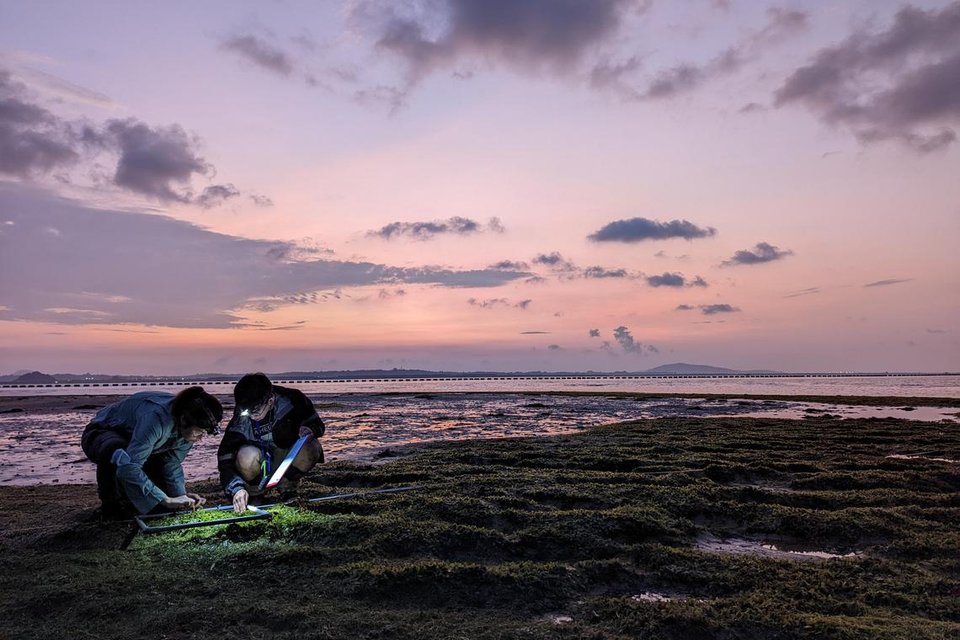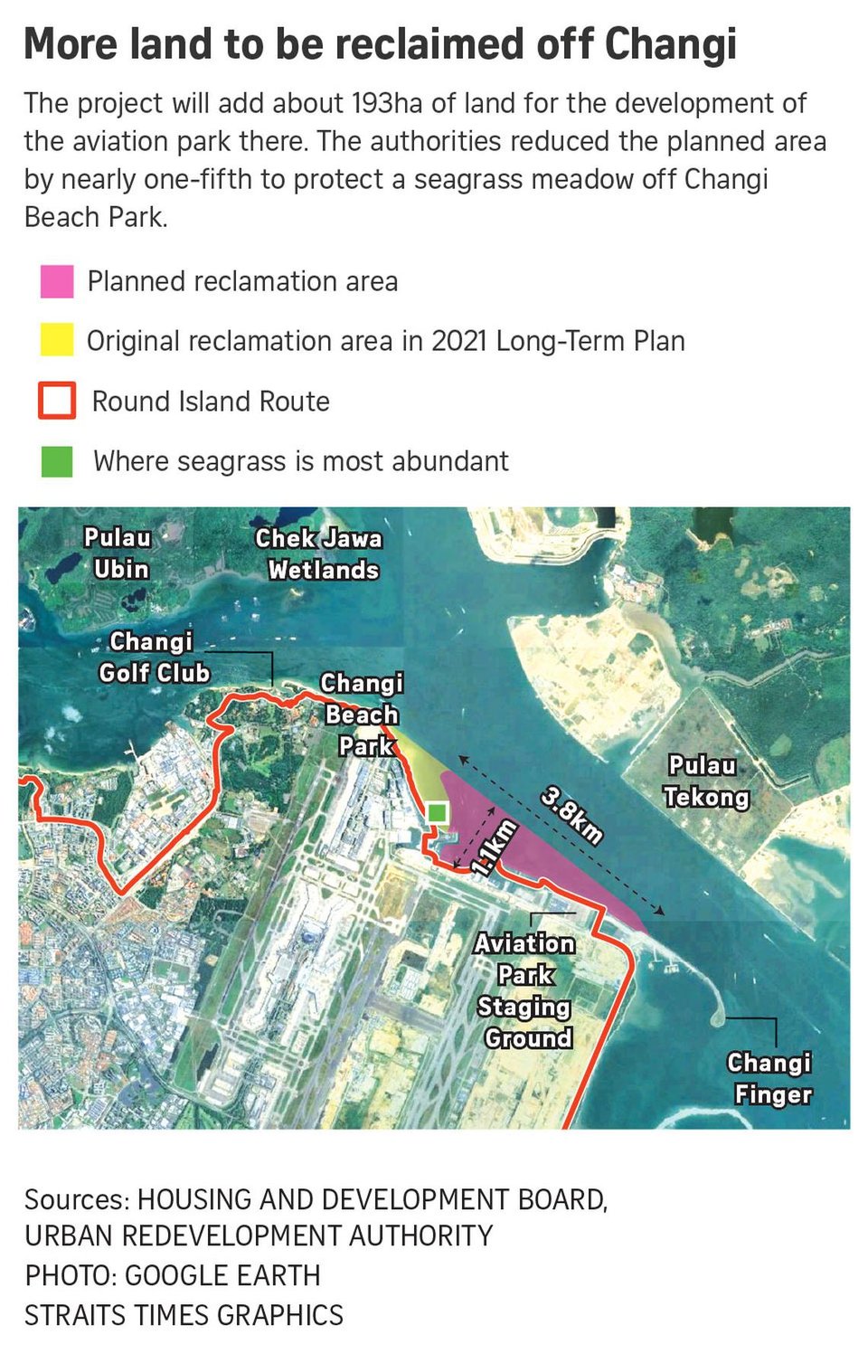193ha of land off Changi to be reclaimed for aviation park; area reduced to save seagrass meadow

(Photo credit: ST Photo/Debby Ng)
Source: The Straits Times
About 193ha of land off Changi will be reclaimed to develop an aviation park, with adjustments made to protect one of Singapore’s largest seagrass meadows, The Straits Times has learnt.
The reclaimed area between Changi Beach Park and Aviation Park Staging Ground near Changi Bay will be almost twice the size of Gardens by the Bay.
The reclaimed area will be used “to support Singapore’s future economic growth and to meet long-term industrial land use needs”, the HDB told ST on July 1.
No timeline was given for the reclamation. HDB is the agent appointed by the Ministry of National Development to carry out land reclamation works.
The Government had previously announced plans for a second airport logistics park from 2030 to raise the capacity of Changi Aviation Park and boost Changi Airport’s role as a regional air cargo hub.
An airport logistics park is a zone near an airport that optimises the flow of air cargo and reduces the cost and transit time for processing goods.
HDB had commissioned an environmental impact assessment to determine the potential impact of the works on coral and seagrass within the project footprint, and the biodiversity that thrives in these habitats.
Surveys to understand human, wildlife and coastal ecosystems near and within the project took place from April 2022 to May 2023.

The report, which found a seagrass meadow and corals in the project site, has been available for people to view in-person since May 9 upon signing of a non-disclosure agreement.
HDB said the footprint of the project will be reduced to limit damage to a seagrass meadow off Changi Beach Park, which experts have said is one of Singapore’s largest.
The HDB said the area to be reclaimed was larger under the latest Long-Term Plan, which charts Singapore’s growth for the next five decades and beyond.
But it was cut by nearly one-fifth, or 45ha.
This adjustment will benefit a seagrass area of about 34ha, the size of roughly eight Padang fields. It is mainly composed of spoon seagrass (Halophilia ovalis) and the locally vulnerable needle seagrass (Halodule uninervis), noted HDB.
Seagrasses are natural sponges for planet-warming carbon dioxide, but their survival in Singapore has been threatened by coastal development and large amounts of sediment in the city-state’s waters.
HDB said that after consulting other agencies, it decided to create an inlet at the northern end of the reclamation site to preserve existing seagrass habitats and allow for their natural expansion.
The inlet is expected to create a sheltering effect, said the report.
It can dull the force of waves, trap fragments of the aquatic plants and promote seagrass growth during the north-east monsoon, when the sea is especially turbulent.
Still, seagrasses off the north of Changi Beach Park, Changi Golf Club and Chek Jawa Wetlands are expected to suffer from a “slight negative impact”, even if measures to blunt the reclamation’s impact are adopted.
This is due to their sensitivity to large quantities of suspended sediment in water, which can prevent light from reaching seagrass, hindering their growth.
The report said that without any intervention, corals within an existing reclaimed area called Changi Finger and its extension will lose some of their habitat.
They will also be vulnerable to suspended sediment as well as the risk of oil spills and leaks.
HDB said it will actively monitor and manage such impacts during construction works.
Corals within the project’s footprint and a surrounding buffer area will be transplanted elsewhere before development works begin.
Which corals to transplant, and suitable sites where they can be transferred to, will be studied, HDB added.
It also plans to use blocks and a gentler gradient for seawalls, which can promote a diverse range of habitats.
Before construction begins, an emergency response plan will be implemented to minimise the risk of impacts to sensitive marine habitats surrounding the reclamation area.
This plan will also account for potential pollution from vessels involved in the reclamation, HDB added.
